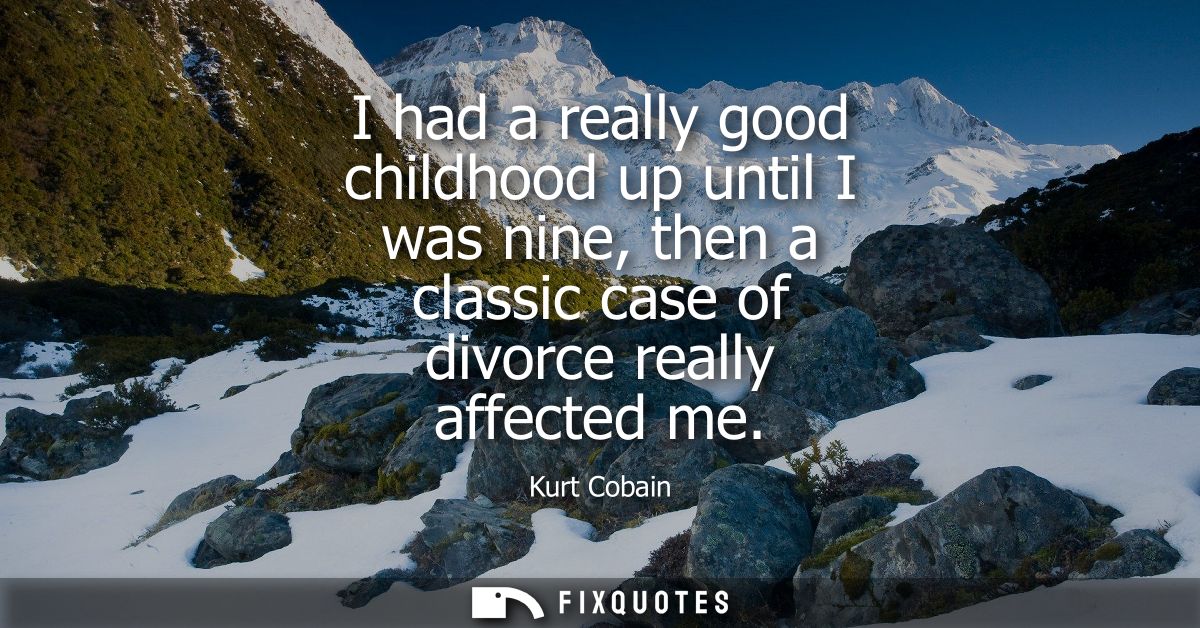"I had a really good childhood up until I was nine, then a classic case of divorce really affected me"
About this Quote
Kurt Cobain’s reflection on his childhood reveals a layered, personal understanding of the profound impact of family dynamics and trauma on individual development. He frames his early years as genuinely positive and nurturing, signifying there was once a stable foundation in his life. The phrase “really good childhood” suggests feelings of safety, love, and perhaps a sense of belonging, which many children experience during formative years. Up until the age of nine, that security is implied to have been uninterrupted, marking a period of innocence and emotional shelter.
The shift occurs abruptly at nine years old, a precise moment, his parents’ divorce, that acts as a turning point, not only in his family structure but in how he would come to process emotions and relationships. By describing his experience as a “classic case of divorce,” Cobain taps into a broader, almost archetypal story shared by many children growing up in households that split. Rather than presenting his circumstances as unique or extraordinary, he aligns his story with a familiar narrative, emphasizing both the commonality and the predictability of the consequences. The use of the word “classic” implies a repetitive pattern of pain and confusion that divorce leaves on children: disrupted trust, fractured identity, and the need to adapt to a new reality before emotional maturity can armor them against it.
Cobain’s admission that divorce “really affected me” is straightforward, yet powerful in its simplicity. It signals deep emotional reverberations that extended from childhood and perhaps shaped his worldview, artistic expression, and personal struggles. For many listeners or readers, it is a window into the origins of his vulnerability and authenticity, qualities that defined his music and public persona. This moment of disruption may serve as an explanation for later difficulties with connection and self-esteem, tracing a line from childhood rupture to adult challenges with belonging and self-worth.
More details
About the Author

